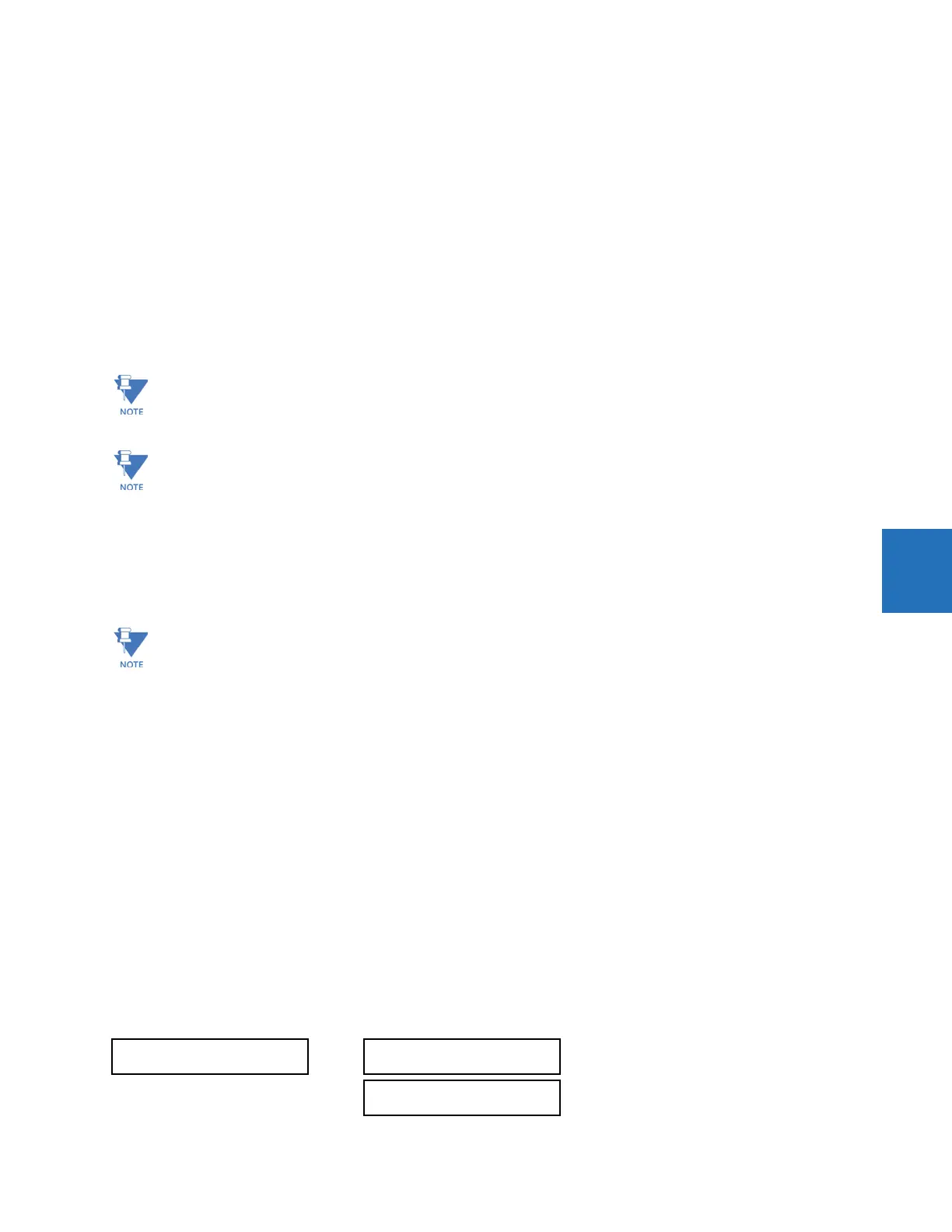CHAPTER 5: SETTINGS PRODUCT SETUP
B90 LOW IMPEDANCE BUS DIFFERENTIAL SYSTEM – INSTRUCTION MANUAL 5-51
5
The DNP scale factor settings are numbers used to scale analog input point values. These settings group the B90 analog
input data into the following types: current, voltage, power, energy, power factor, and other. Each setting represents the
scale factor for all analog input points of that type. For example, if the
DNP VOLTAGE SCALE FACTOR setting is set to “1000,”
all DNP analog input points that are voltages are returned with values 1000 times smaller (for example, a value of 72000 V
on the B90 is returned as 72). These settings are useful when analog input values must be adjusted to fit within certain
ranges in DNP masters. Note that a scale factor of 0.1 is equivalent to a multiplier of 10 (that is, the value is 10 times larger).
The
DNP DEFAULT DEADBAND settings determine when to trigger unsolicited responses containing analog input data. These
settings group the B90 analog input data into the following types: current, voltage, power, energy, power factor, and other.
Each setting represents the default deadband value for all analog input points of that type. For example, to trigger
unsolicited responses from the B90 when any current values change by 15 A, the
DNP CURRENT DEFAULT DEADBAND setting
is set to “15.” Note that these settings are the deadband default values. DNP object 34 points can be used to change
deadband values, from the default, for each individual DNP analog input point. For any change to take effect, restart the
relay. Whenever power is removed and re-applied to the B90, the default deadbands are in effect.
The
DNP TIME SYNC IIN PERIOD setting determines how often the Need Time Internal Indication (IIN) bit is set by the B90.
Changing this time allows the DNP master to send time synchronization commands more or less often, as required.
The
DNP MESSAGE FRAGMENT SIZE setting determines the size, in bytes, at which message fragmentation occurs. Large
fragment sizes allow for more efficient throughput; smaller fragment sizes cause more application layer confirmations to
be necessary, which provides more robust data transfer over noisy communication channels.
The
DNP OBJECT 1 DEFAULT VARIATION to DNP OBJECT 32 DEFAULT VARIATION settings select the DNP default variation
number for object types 1, 2, 20, 21, 22, 23, 30, and 32. The default variation refers to the variation response when variation
0 is requested and/or in class 0, 1, 2, or 3 scans. See the DNP Implementation section in the UR Family Communications
Guide.
The DNP binary outputs typically map one-to-one to IED data points. That is, each DNP binary output controls a single
physical or virtual control point in an IED. In the B90 relay, DNP binary outputs are mapped to virtual inputs. However, some
legacy DNP implementations use a mapping of one DNP binary output to two physical or virtual control points to support
the concept of trip/close (for circuit breakers) or raise/lower (for tap changers) using a single control point. That is, the DNP
master can operate a single point for both trip and close, or raise and lower, operations. The B90 can be configured to
support paired control points, with each paired control point operating two virtual inputs. The
DNP NUMBER OF PAIRED
CONTROL POINTS
setting allows configuration of 0 to 32 binary output paired controls. Points not configured as paired
operate on a one-to-one basis.
The
DNP TCP CONNECTION TIMEOUT setting specifies a time delay for the detection of dead network TCP connections. If
there is no data traffic on a DNP TCP connection for greater than the time specified by this setting, the connection is
aborted by the B90. This frees up the connection to be re-used by a client. For any change to take effect, restart the relay.
5.3.6.11 DNP / IEC 60870-5-104 point lists
SETTINGS PRODUCT SETUP COMMUNICATIONS DNP / IEC104 POINT LISTS
The B90 relay does not support power metering. As such, the
DNP POWER SCALE FACTOR and DNP POWER DEFAULT
DEADBAND
settings are not applicable.
The B90 relay does not support energy metering. As such, the
DNP ENERGY SCALE FACTOR and DNP ENERGY DEFAULT
DEADBAND
settings are not applicable.
Check the “DNP Points Lists” B90 web page to view the analog inputs and/or binary inputs points lists. This page
can be viewed with a web browser by entering the IP address of the B90 Ethernet port employed to access the B90
Main Menu, then by clicking the Device Information Menu item, then the DNP Points Lists item.
DNP / IEC104
POINT LISTS
BINARY INPUT / MSP
POINTS
See below
ANALOG INPUT / MME
POINTS
See below

